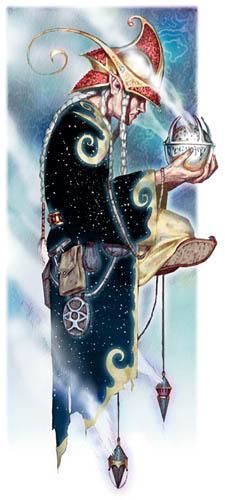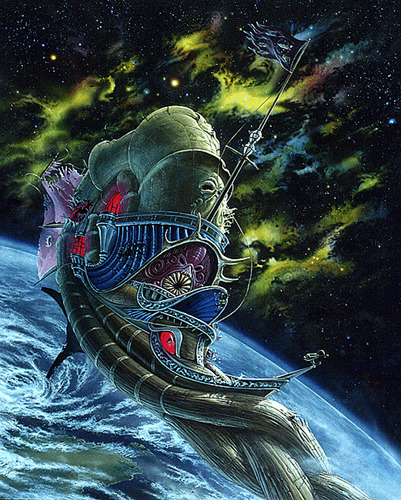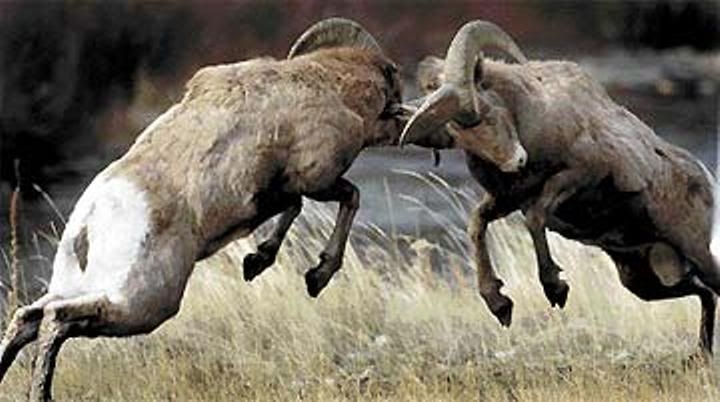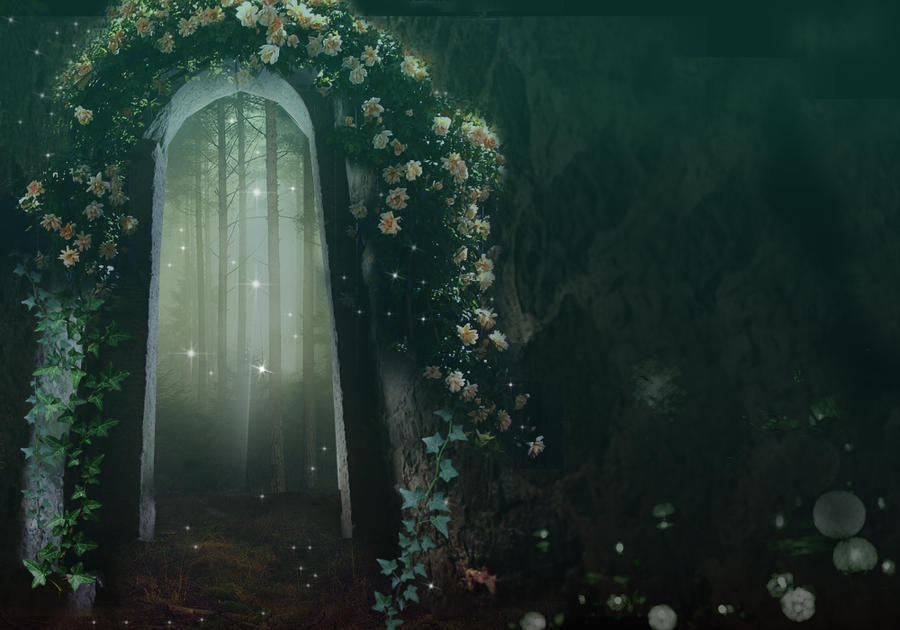"A neutral cleric of 9th level or greater may choose to study nature instead of remaining among "civilized" areas. This type of cleric is called a druid." - Dungeons & Dragons, Players Companion: Book One
This article discusses prestige classes and unintentionally seeks a goal that turns them into an insidious trap.
I love prestige classes. My standard operating procedure in games is when players hire henchmen, if they survive to level one, they receive a class. Examples of classes that have been acquired by my player's henchmen include Woodsman, Dandy, Incantrix, Thug, Jester, and Deathmaster.
Humans have a lot of flexibility in how they gain levels. But that doesn't negate the ability for them to enter a special prestige class either. In fact, such an idea is awesome!
If you are sitting around with your friends playing a game, you should be actively playing the game now.
"This build doesn't work yet, I'll need to get to level 5 to really make it work."
"I know that feat seems kind of useless, but I have to pick it up so I can get two levels in this prestige class."
"What do you mean, where do I find a member to teach me? It's right here in the book and I qualify for it, so I'm going to take a level in it."
The problem with codifying prestige classes is that players cannot help but focus on what they are going to be instead of what they are. This isn't a problem with prestige classes, this is a problem with codifying them. So we don't need a book of prestige classes, we don't need a book filled with restrictions and limits and builds. We really don't even need rules on how to construct a prestige class.
![]() Simply the idea that perhaps somewhere in the world is someone willing to teach you something you don't
Simply the idea that perhaps somewhere in the world is someone willing to teach you something you don't
already know.
I am no large fan of worrying a great deal about taking efforts to maintain verisimilitude. Any group of people willing to role-play should in a matter of seconds be able to come up with a reasonable explanation for any event that occurs in game. In this case, I believe the concept of prestige classes is greatly improved when it's approached not from a mechanical angle, but from a fictional one.
Hints should be dropped of strange sorcerous cults. Non-player characters with bizarre powers and abilities not listed in the handbook should be met. Monsters may know ancient techniques that they will only share with those adventurers brave enough to enter their lair unarmed. Strange beings from the void move about in secret in large cities and only by stowing away in their hidden ships may their secrets be uncovered. Ancient texts contain forgotten and hidden-
But that's enough isn't it? You have ideas of your own bait to drop into your campaign at this point, just to see which players bite.
You don't need rules to stat up a class. Quick, think of four or five powers a pyromancer might have! Think of some restrictions to go with it! BAM. You have a new prestige class. Use any book, any resource to get ideas and drop some hints in your campaign this week.
To his credit, Venger finishes his article with "I thought it was important to sow the seeds of imagination before anything else. In fact, I would rather have a short paragraph describing each career path than a list of numbers, bonuses, modifiers, and rules." and that does sound like a good idea.
This article discusses prestige classes and unintentionally seeks a goal that turns them into an insidious trap.
I love prestige classes. My standard operating procedure in games is when players hire henchmen, if they survive to level one, they receive a class. Examples of classes that have been acquired by my player's henchmen include Woodsman, Dandy, Incantrix, Thug, Jester, and Deathmaster.
Humans have a lot of flexibility in how they gain levels. But that doesn't negate the ability for them to enter a special prestige class either. In fact, such an idea is awesome!
So what's the trap in Prestige classes?
If you are sitting around with your friends playing a game, you should be actively playing the game now.
"This build doesn't work yet, I'll need to get to level 5 to really make it work."
"I know that feat seems kind of useless, but I have to pick it up so I can get two levels in this prestige class."
"What do you mean, where do I find a member to teach me? It's right here in the book and I qualify for it, so I'm going to take a level in it."
The problem with codifying prestige classes is that players cannot help but focus on what they are going to be instead of what they are. This isn't a problem with prestige classes, this is a problem with codifying them. So we don't need a book of prestige classes, we don't need a book filled with restrictions and limits and builds. We really don't even need rules on how to construct a prestige class.
What do we need?
 Simply the idea that perhaps somewhere in the world is someone willing to teach you something you don't
Simply the idea that perhaps somewhere in the world is someone willing to teach you something you don't already know.
I am no large fan of worrying a great deal about taking efforts to maintain verisimilitude. Any group of people willing to role-play should in a matter of seconds be able to come up with a reasonable explanation for any event that occurs in game. In this case, I believe the concept of prestige classes is greatly improved when it's approached not from a mechanical angle, but from a fictional one.
Hints should be dropped of strange sorcerous cults. Non-player characters with bizarre powers and abilities not listed in the handbook should be met. Monsters may know ancient techniques that they will only share with those adventurers brave enough to enter their lair unarmed. Strange beings from the void move about in secret in large cities and only by stowing away in their hidden ships may their secrets be uncovered. Ancient texts contain forgotten and hidden-
But that's enough isn't it? You have ideas of your own bait to drop into your campaign at this point, just to see which players bite.
What don't we need?
You don't need rules to stat up a class. Quick, think of four or five powers a pyromancer might have! Think of some restrictions to go with it! BAM. You have a new prestige class. Use any book, any resource to get ideas and drop some hints in your campaign this week.
To his credit, Venger finishes his article with "I thought it was important to sow the seeds of imagination before anything else. In fact, I would rather have a short paragraph describing each career path than a list of numbers, bonuses, modifiers, and rules." and that does sound like a good idea.
































